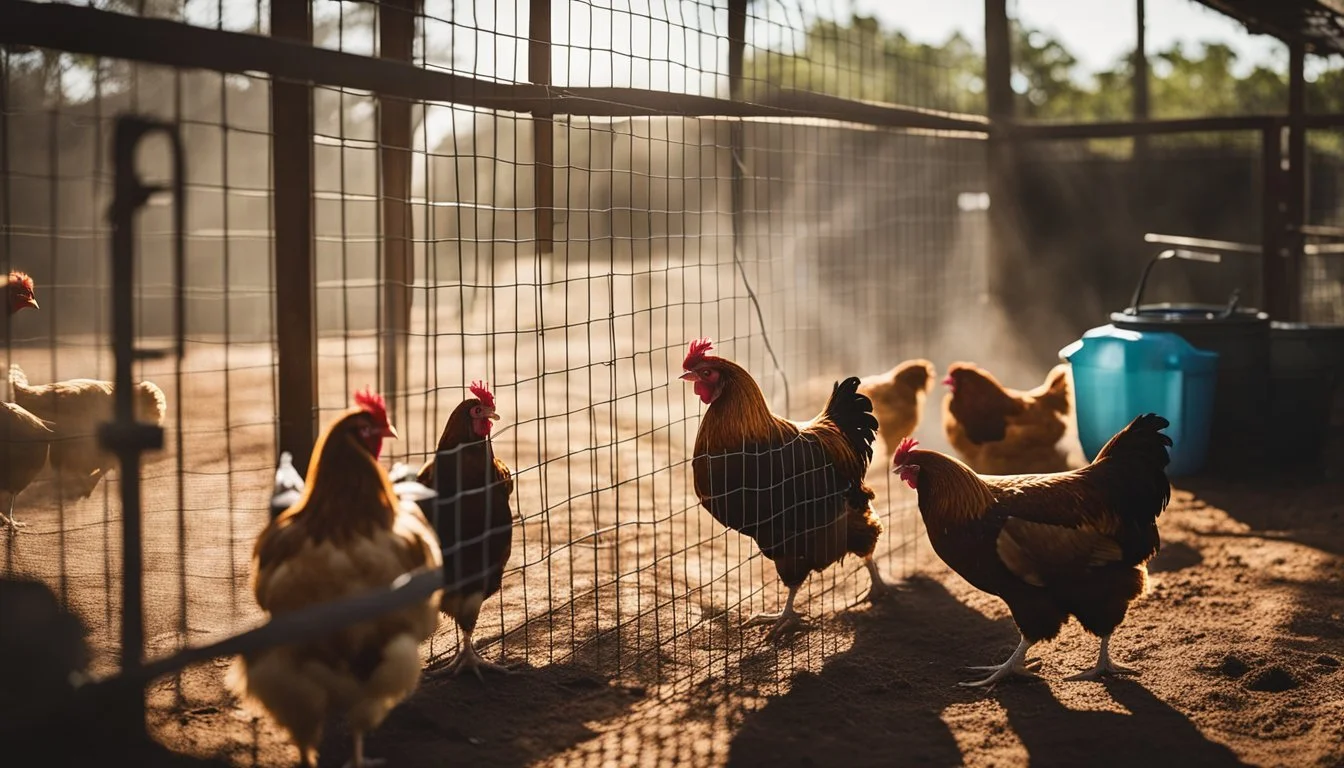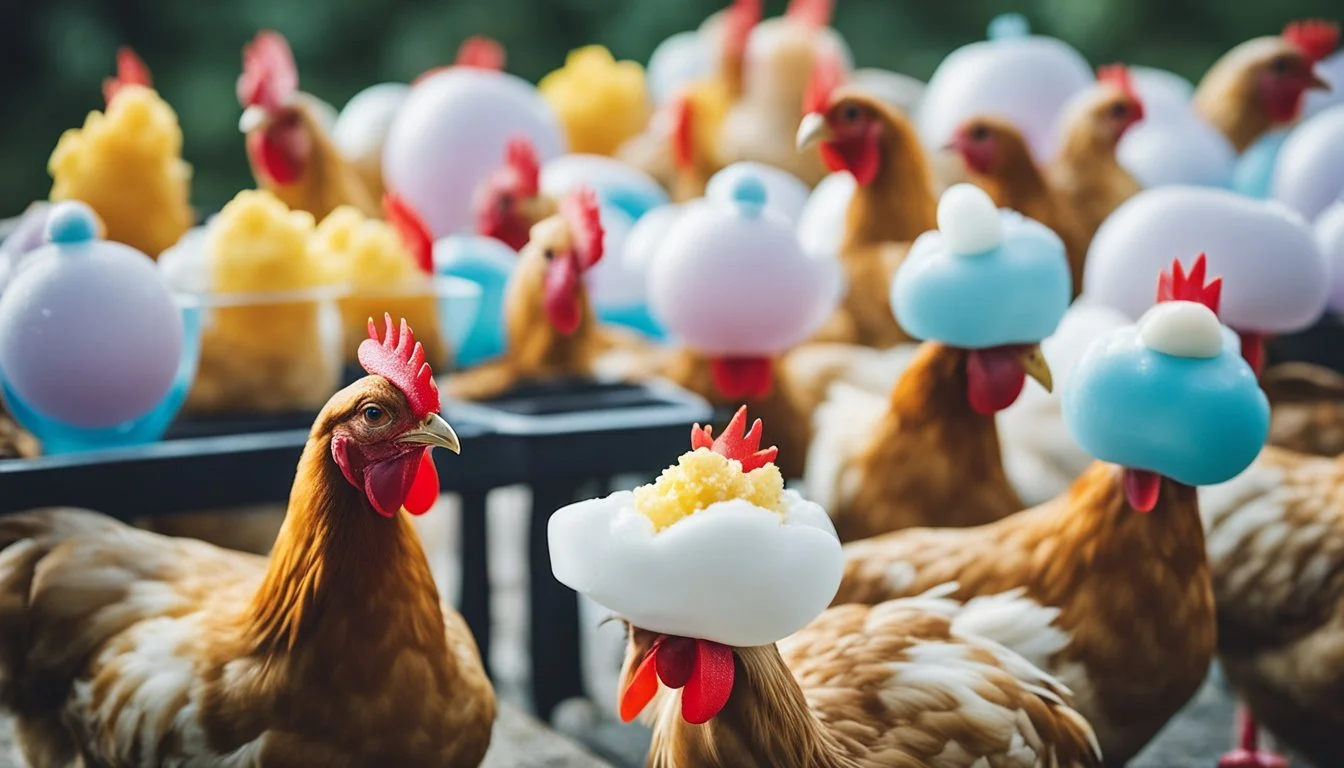5 Ways to Keep Your Chickens Cool in the Heat
Expert Tips for Summer Care
As temperatures rise, ensuring the well-being of your chickens becomes increasingly important. Extreme heat can significantly affect their health, egg production, and overall comfort. By taking proactive steps, you can help your flock stay cool and thrive even in the hottest weather.
Protecting chickens from heat stress is crucial for maintaining their health and productivity. Simple adjustments to their environment and daily care routine can make a significant difference. This article will explore five effective methods to keep your chickens cool and comfortable during heat waves.
1) Provide Shaded Areas
Ensuring that chickens have shaded areas is essential during hot weather. Shade helps to minimize the direct exposure to sunlight, reducing the risk of overheating.
Trees and bushes naturally provide some of the best shade for chickens. If the chicken run lacks sufficient natural cover, create additional shade using tarps or shade cloth.
Position shade cloths over the run in a way that allows air to circulate underneath. This ensures the shaded area remains cool and comfortable for the chickens.
Another option could be building simple structures, such as lean-tos or pergolas, covered with materials that block sunlight. This can create a permanent shady retreat for the flock.
Check the shaded areas throughout the day to ensure they effectively block sunlight and are situated in places where chickens like to gather.
Using portable shade solutions, such as umbrellas or outdoor canopies, can also be helpful for temporary relief during particularly hot spells. With these measures in place, chickens can enjoy a cooler environment and maintain better health during the heat.
2) Use Misting Systems
Misting systems can be an effective way to keep chickens cool during hot weather. These systems create a fine mist that evaporates quickly, lowering the surrounding air temperature. This cooling effect can make a significant difference in keeping the coop temperature manageable.
Installing a misting system is relatively straightforward. Most systems can be connected to a standard garden hose, making setup accessible for most backyard farmers. For best results, position the misters around the coop and shaded areas where chickens spend the most time.
Misters are particularly useful in regions with intense heat. They provide a consistent cooling mechanism without getting the chickens wet enough to cause distress. It is essential to monitor the misting setup regularly to ensure it functions correctly and meets the needs of the flock.
The use of a thermostat-activated misting system can automate the process. This ensures the mist activates only when temperatures reach a specific threshold, optimizing water usage and ensuring the chickens remain comfortable during peak heat periods.
3) Supply Fresh, Cool Water
Providing fresh, cool water is essential in keeping chickens comfortable during hot weather. Ensure their water is changed frequently throughout the day. This helps maintain a consistently cool temperature.
It's beneficial to place water sources in shaded areas. Doing so prevents the water from heating up too quickly under direct sunlight. Adding ice cubes to the water can further help in keeping it cool.
Setting up multiple drinking stations around the coop can ensure all chickens have easy access to hydration. This reduces potential crowding issues and keeps the flock less stressed.
Using a kiddie pool or shallow pan filled with water can also provide an additional source of refreshment. Chickens can cool off by dipping their feet, which helps to lower their body temperature.
4) Install Fans in the Coop
Installing fans in the coop helps keep chickens cool. Fans improve air circulation, which reduces the temperature inside the coop. This is especially important during the summer months when heat can become unbearable.
Position fans strategically to maximize airflow. Place them near windows or vents to pull in cool air and push out warm air. Ensure the fans are securely mounted and out of reach of the chickens.
Choose fans designed for agricultural use, as they are often more durable and suitable for continuous operation. Box fans or exhaust fans work well in most chicken coops.
Regularly maintain the fans to ensure they run efficiently. Clean the blades and motor to prevent dust buildup. Keep the cords and plugs away from water sources to avoid electrical hazards.
Providing a consistent airflow with fans will help maintain a more comfortable environment for the chickens. This is a practical and effective way to combat the heat inside the coop.
5) Offer Frozen Treats
Providing frozen treats is an effective way to keep chickens cool during hot weather.
Chickens enjoy a variety of frozen snacks that can help them beat the heat. Corn frozen in ice cube trays is a simple and popular option. Fill the trays with corn and water, then freeze.
Another idea is mixing vegetables like peas and carrots with water and freezing them.
Frozen berries also make great treats. Blueberries, raspberries, and strawberries can be added to water and frozen in muffin tins or ice cube trays.
This method ensures your chickens stay hydrated and cool. Always monitor portions to avoid overfeeding and causing digestive issues.
Fresh, clean water should always be available alongside these treats, as hydration is crucial during extreme heat.
By offering frozen treats, you provide an enjoyable and cooling snack that helps maintain the health and comfort of your flock.
Understanding the Risks of Overheating
Chickens are particularly vulnerable to heat stress due to their feathered bodies and limited ability to cool down.
When temperatures rise, chickens can struggle to maintain their normal body temperature, which can lead to serious health issues. Heat stress can cause symptoms such as panting, spreading wings, and lethargy.
Extreme heat can lead to reduced egg production. Eggs may also become irregular in shape, have thin shells, or even become unshellable. This impacts both the productivity and the well-being of the flock.
Several factors contribute to overheating, including inadequate shade, poor ventilation, and insufficient water supply. These elements can exacerbate the risk of heat-related illnesses and, in severe cases, lead to death.
In a list of critical signs of overheating, consider:
Panting or gasping for air
Pale combs and wattles
Lethargy or lack of coordination
Seizures or convulsions
Regular monitoring and immediate action can prevent severe outcomes.
Proper management practices include:
Providing ample shade: Ensure plenty of shaded areas within the coop and run.
Improving ventilation: Promote airflow to help dissipate heat trapped inside.
Ensuring water availability: Chickens need continuous access to cool, fresh water.
Taking these measures can significantly reduce the risks associated with heat, safeguarding the health of your flock during hot weather.
Choosing the Right Coop Location
Properly locating your chicken coop has a significant impact on keeping your chickens cool during the heat. Careful consideration of shade, ventilation, elevation, and ground cover ensures your flock remains comfortable.
Shade and Ventilation
Strategically placing the coop in a shaded area greatly reduces heat stress. Choosing a spot under large trees or along the side of a building can provide natural shade, especially during the hottest parts of the day.
Good ventilation is essential. Windows, vents, and doors should allow for ample airflow, helping to expel hot air and bring in cooler air. Ensuring that these openings are predator-proof adds an essential security layer. Use mesh screens or welded wire for protection. Cross-ventilation, with vents on opposite sides of the coop, can be particularly effective.
Elevation and Ground Cover
Positioning the coop on higher ground helps keep it cooler. Elevated locations benefit from natural air circulation, reducing stagnant, hot air buildup around the coop. Avoid low-lying areas prone to flooding or poor drainage, as pooled water can increase humidity and heat.
Using ground cover such as grass, wood chips, or sand around the coop area can help manage temperatures. Grass retains moisture and creates a cooler environment, while wood chips and sand aid in absorbing heat. Regularly wetting these coverings can further cool the ground, providing relief for the chickens.
By following these guidelines, chicken keepers can create a more comfortable and healthier environment for their flock.
Implementing Cooling Techniques
Keeping chickens cool during hot weather is crucial for their health and well-being. This section explores specific methods for maintaining hydration and introducing cooling aids to ensure a comfortable environment for the flock.
Water Sources and Hydration
Ensuring chickens have access to fresh, cool water is essential. Waterers should be placed in shady areas to prevent the water from heating up. It’s beneficial to add ice cubes to the water throughout the day, helping maintain a lower temperature.
Multiple water stations can minimize crowding and ensure all chickens stay hydrated. Regularly clean and refill water containers to prevent algae and bacteria buildup. Freshwater will also be more appealing to chickens, encouraging frequent drinking.
Electrolytes can be added to water sources to help chickens recover lost minerals and stay hydrated more effectively. These supplements are especially useful during extreme heat when dehydration risks are higher.
Cooling Mats and Fans
Utilizing cooling mats can provide a direct, effective relief for chickens. These mats can be placed in shaded areas of the coop or run. They are designed to absorb and dissipate heat, giving chickens a cool place to rest.
Fans can improve ventilation and air circulation within the coop, significantly reducing temperatures. Position fans to create cross-ventilation, ensuring that fresh air displaces hot, stagnant air. Misting fans can add another layer of cooling by dispersing fine water droplets into the air.
Automatically controlled fans that adjust based on temperature readings are an efficient investment. They ensure optimal coop conditions without constant manual adjustments, keeping the environment consistently cool.



